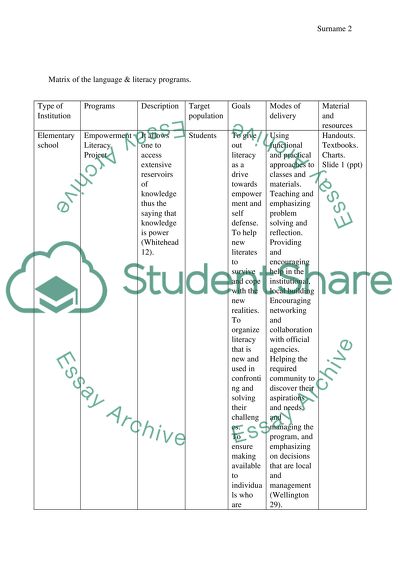Cite this document
(“A Survey of Language and Literacy (L&L) Programs Research Paper - 1”, n.d.)
Retrieved from https://studentshare.org/education/1600350-a-survey-of-language-and-literacy-ll-programs
Retrieved from https://studentshare.org/education/1600350-a-survey-of-language-and-literacy-ll-programs
(A Survey of Language and Literacy (L&L) Programs Research Paper - 1)
https://studentshare.org/education/1600350-a-survey-of-language-and-literacy-ll-programs.
https://studentshare.org/education/1600350-a-survey-of-language-and-literacy-ll-programs.
“A Survey of Language and Literacy (L&L) Programs Research Paper - 1”, n.d. https://studentshare.org/education/1600350-a-survey-of-language-and-literacy-ll-programs.


